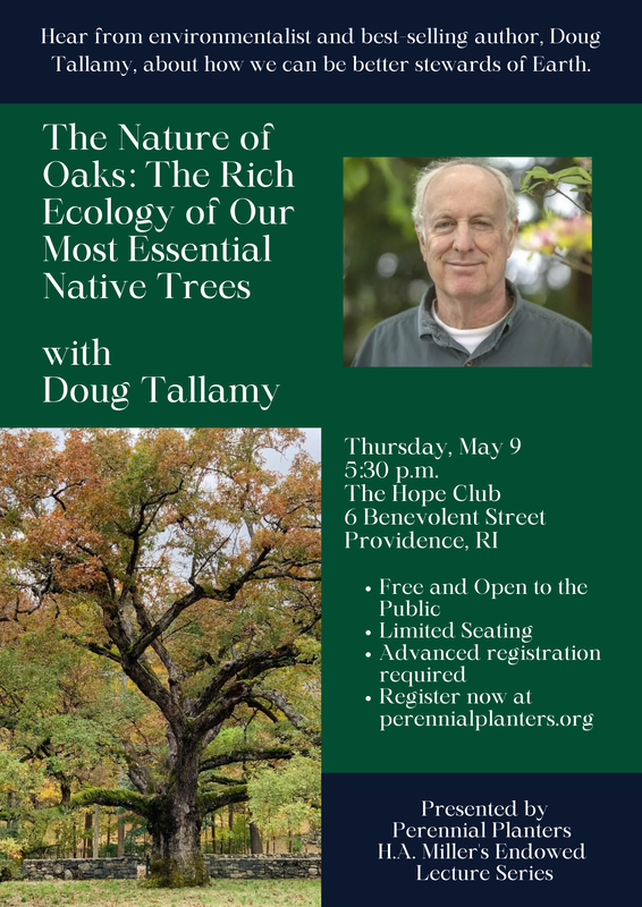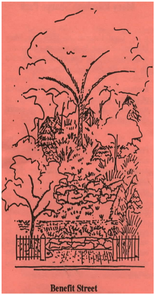The H. A. Miller Endowed Lecture Series presents
Doug Tallamy
The Nature of Oaks: The Rich Ecology of Our Most Essential Native Trees
Free and open to the public. Reserve a seat here.
Doug Tallamy
The Nature of Oaks: The Rich Ecology of Our Most Essential Native Trees
Free and open to the public. Reserve a seat here.
Perennial Planters is a proud member of the
Garden Club of America and the Rhode Island Federation of Garden Clubs
Garden Club of America and the Rhode Island Federation of Garden Clubs
The Perennial Planters Garden Club fosters a community of horticulturists dedicated to the love of gardening and to the improvement and benefit of the urban landscape through action in education, conservation and preservation. In addition to membership in the Garden Club of America and ongoing collaboration with other GCA Clubs, Perennial Planters is actively involved with the Rhode Island Federation of Garden Clubs, sharing the advantages of association by means of educational meetings, conferences and correspondence, not only in our Community but in our State, Nationally and Internationally.
|
A History of the Mary Elizabeth Sharpe Park
by Rebecca W. S. More Updated: 9/23 The City of Providence's Mary Elizabeth Sharpe Park was dedicated in 1989. Until the fall of 1988, the Mary Elizabeth Sharpe Park was an eyesore, an overgrown, abandoned lot in the heart of historic Providence. Visitors to the remarkable architectural heritage of Providence and the PPS Festival of Historic Houses had to pass a tangle of underbrush and garbage behind a rusted
chain link fence.1 The L-shaped Lot, which fronted Benefit St at 141 and extended behind 147 Benefit St, was part of the original 17th c. Benjamin Cushing Lot which ran from Town (N. Main) St to Hope St. A house was built on the Benefit to Wheaton (Pratt) St portion of the Lot in the 19th c., the outlines of which may be seen on the Park-side of 147 Benefit St. It was owned by "Dr." William Lincoln Bates who operated an electropathic sanatorium there until c. 1900.2 It is possible that science-fiction author H. P. Lovecraft was inspired to write "The Shunned House," (1924) about the house adjacent at 135 Benefit St., because of its proximity to the controversial Bates Sanatorium. Read more |
|
Click to set custom HTML


